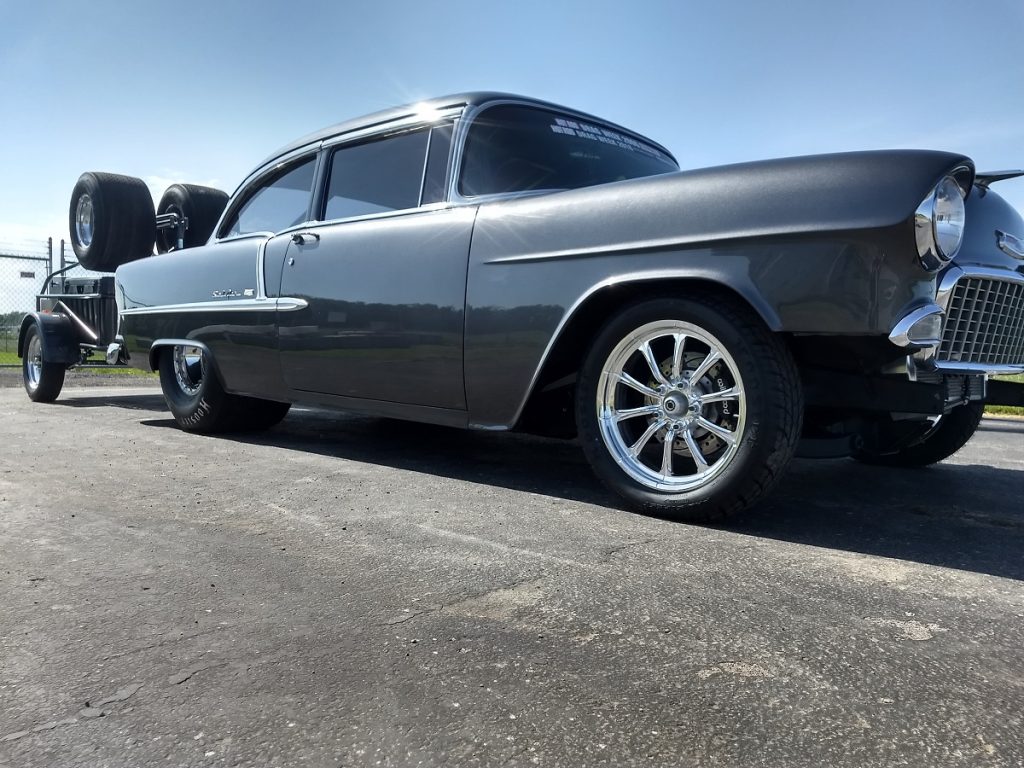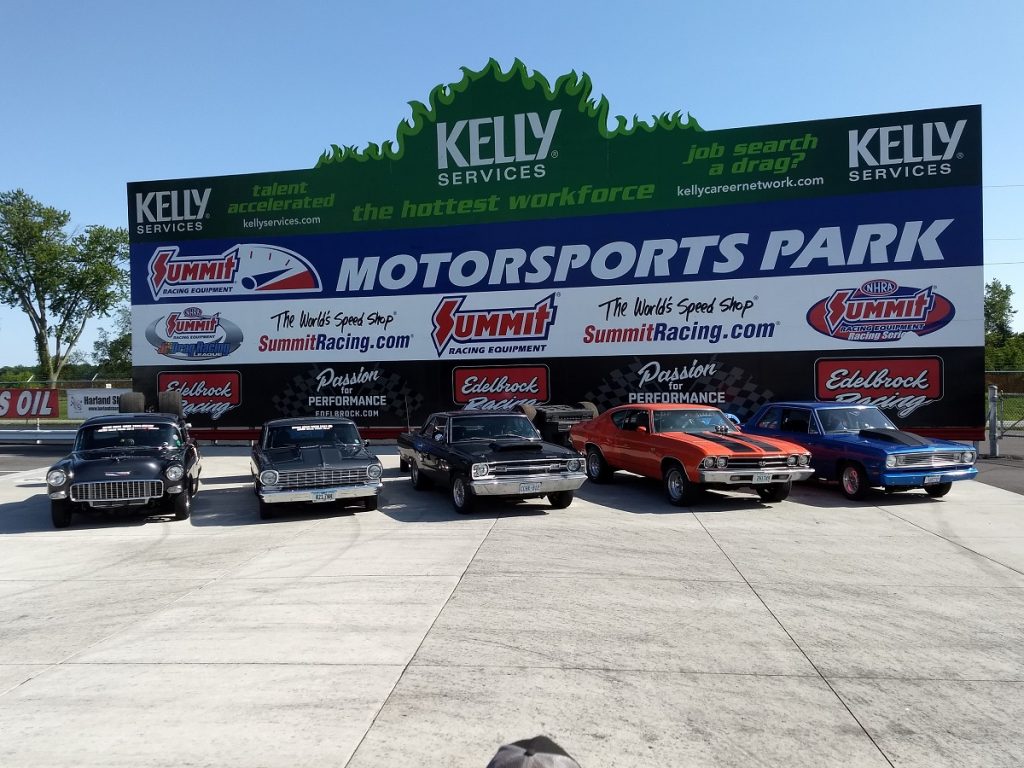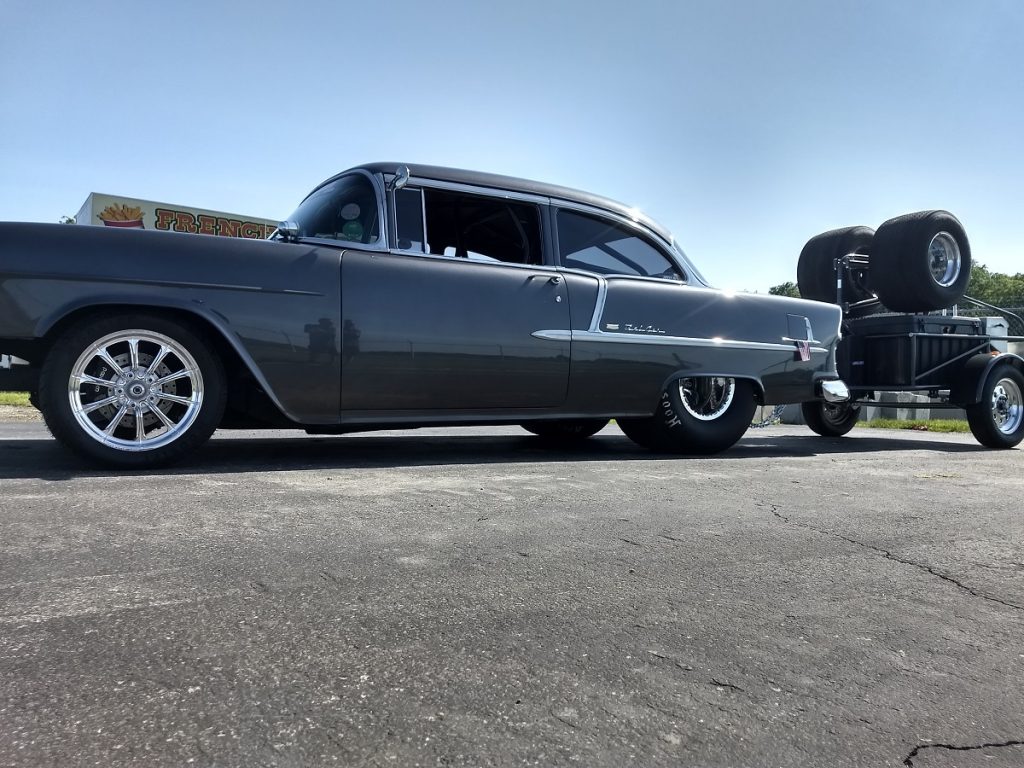
“There are two kinds of people for these events. People who want to do it but won’t commit to the possible torture. Then there are people like us. We eat, sleep, and breathe drag-and-drive,” said Jesse Havlik, who built a 1955 Chevy Bel-Air with his cousin (and car owner) Brian Havlik to compete this week in the inaugural 2019 Midwest Drags.
The Midwest Drags is a three-day, drag-and-drive event, similar to Hot Rod’s Drag Week, slated for June 5-7 at the following three tracks:
- Wagler Motorsports Park in Lyons, IN
- Muncie Dragway in Albany, IN
- Summit Motorsports Park in Norwalk, OH
Like Drag Week, all registered vehicles must be driven on public roads between each event, making an interesting display of power versus reliability. There are more than a dozen racing classes, and vehicles must comply with NHRA and/or IHRA rules.
The Havlik’s ’55 Bel-Air will compete in the Super Street NA class.
Jesse and Brian Havlik own Cedar Rapids, IA-based HotRods by Havliks. Brian Havlik is planning to drive the car throughout the Midwest Drags since he owns the car. The cousins are also building a 1948 Ford Anglia owned by Jesse Havlik, which he hopes to run in next year’s Midwest Drags, so that they will have two cars competing.
Racing for Charity
Any winnings collected will be 100-percent donated to Monticello, IA-based Camp Courageous—a non-profit organization that provides year-round recreational and respite care for special-needs individuals or families with family members that have special needs.
“We are hoping that others jump on board and may contribute to the charity also,” Jesse Havlik said.
Drag-and-Drive vs. Trailered Race Events

“The biggest difference for a drag-and-drive car and a trailered race car is driver comfort,” Jesse Havlik said. “If it’s not comfortable, you’re not going to enjoy driving it very much. A race car has the bare necessities to race. We like to enjoy the radio jamming, soft seats, gear-shifting, fire-breathing exhaust feel more than just a quarter-mile at a time.”
These events take a lot of energy and concentration both on and off the track, he said.
“You have to be committed to making good, clean, fast passes and having the stamina to drive to the next track. A typical race weekend you have breaks in between passes and then you go home. Here, it’s about getting your passes in, and getting on the road so you have time to overcome any obstacles,” he said. “You’re never done until you’re face-down in the hotel—if you make it to the hotel. There may be days where you catch a nap in the staging lanes because you were on the road all night.”
…

Brian and Jesse Havlik met up with some friends from Canada in Norwalk, OH (the final stop on the Midwest Drags tour) on Sunday where the crew left their trailers before beginning their convoy to Wagler Motorsports Park back west in Indiana.
“We don’t foresee any issues driving a few extra hundred miles before the event,” Jesse Havlik said. “This gives us time to make any changes or adjustments before the event starts. Plus, we build them to drive! We have been driving our cars to the track, racing, and back home for years. There is always concern of breakage, and wear and tear, but that comes with the territory. You pack what you need and anything else you might need without overloading the car and trailer.
“With Summit Racing supplying a direct number to call and have parts delivered alongside the road, it cuts down on some items to bring.”
Just the Beginning for Midwest Drags
“We are excited to be part of this first-year event and hope to be part of its growth in the future,” Jesse Havlik said. “There are some exciting things in the works and we can’t wait to announce them at the awards ceremony.”


I think people would like to know an approximate number of participants. How many register and, how many finish, on average.
Thank you, Jerri. I’ll try to gather that information for a wrap-up story Friday from Norwalk.
I learned today Jerri that 120 cars are in this year’s field (the first year of the event’s existence). I think organizers are expecting that number to be much higher in the future.
[…] Jesse and Brian Havlik, co-owners of the Cedar Rapids, IA-based hot rod shop, and builders of a sweet ’55 Chevy Bel-Air they had to shut down prior to Day 3 racing for the Midwest Drags, said they’ll be trying to get the new giveaway Nova ready to show off at […]